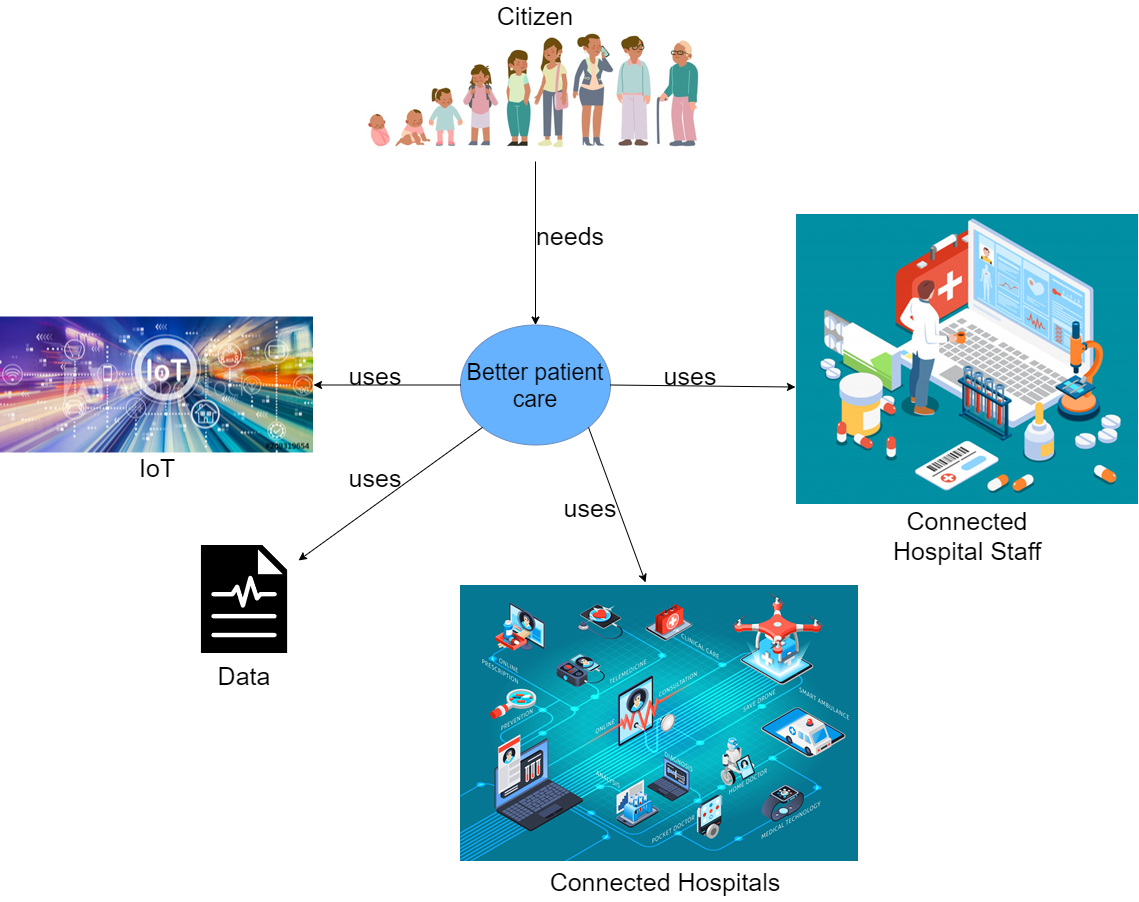This conceptual example describes the River City initiative with regard to the healthcare service as follows. Figure 1 shows that to provide better patient care to the citizens of River City, the system uses IoT to provide data to the connected hospitals, which in turn will provide information to the hospital staff.

The smart city manager plans to improve the usage of data in order to improve the services provided by the hospitals to the citizens, therefore, he has decided to implement a smart health initiative in the city.
To implement this idea, the data manager of the project needs to understand the requirements, such as:
- What services will be provided
- What data is necessary for each service
- What are the necessary steps to process the relevant data
- What are the stakeholders involved
In order to address the requirements above, the data manager has decided to use a data lifecycle, which is a framework that contains the stages/activities that data has to go through from its creation to disposal. With the framework, the manager will be able to know what data will be collected, what are the requirements to process it and relevant stakeholders involved, therefore to ensure that data is collected and prepared for the intended usage and end users.
His main concerns related to architecture issues are:
- How to design service as per the given requirement
- How to process data and be in compliance with the relevant regulations
- How to integrate the different platforms and technologies
Citizens are the final users of the services. They concern about specific issues, such as (i) having a smooth hospital experience (ii) receive effective diagnosis and treatment.
